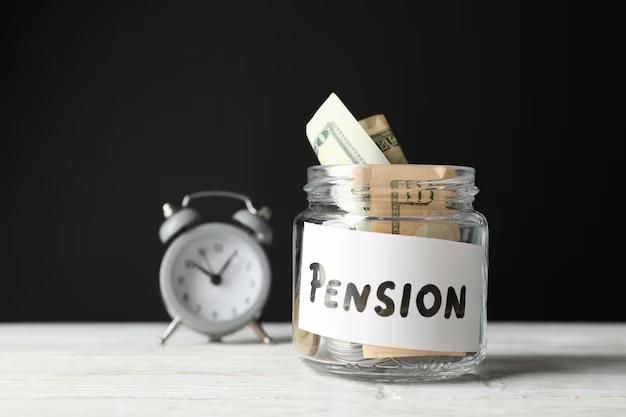Understanding Pensions: Your Comprehensive Guide to a Secure Future
Planning for retirement can feel like a daunting task, but understanding pensions is a crucial step in ensuring a secure future. These financial plans are essential for many individuals, providing a stable income once their working years are over. Whether you're just starting to think about retirement or are actively planning your financial future, understanding the ins and outs of pensions can empower you to make informed decisions. Through this guide, we’ll dive into the core components of pensions, related subtopics, and practical tips to help clarify this complex but vital subject.
🎯 What Exactly Is a Pension?
A pension is a retirement savings plan that provides you with a regular income once you retire. Typically, it accumulates during your working life and pays out in your retirement. Unlike savings that you may set aside independently, pensions are often sponsored by employers or government entities, and they come with specific legal and tax benefits.
Types of Pensions
There are several types of pensions tailored to fit different needs and employment scenarios:
Defined Benefit (DB) Plans: These are traditional pension plans where your employer commits to pay you a specified amount based on factors like salary history and years of service. They provide a predictable income stream in retirement.
Defined Contribution (DC) Plans: More common today, these plans involve contributions made by you and sometimes your employer into an individual account. The retirement benefits you receive depend on the contributions made and the performance of the investments chosen.
Government Pensions: Often available through social security or public service jobs, and provide benefits as part of a government's broader social safety net.
Hybrid Plans: These combine features of both DB and DC plans, offering more flexibility and limits on retirement benefits.
Why Pensions Matter
Pensions are critical because they provide a stable income during retirement, helping ensure that retirees can maintain their standard of living without relying solely on personal savings or other investments.
🧭 Navigating Pension Plans: Key Considerations
When evaluating your pension options, it’s important to consider several key factors:
Vesting Periods
Vesting refers to the amount of time you must work before gaining ownership of your pension benefits. Some pensions have immediate vesting, while others require a period of service before you become eligible to receive benefits.
Contributions and Funding
In DC plans, contributions might come from both you and your employer. Understanding these contributions' structure can aid you in planning and maximizing your retirement benefits.
Portability and Transferability
Some plans allow you to transfer your benefits if you switch jobs. It's essential to know whether your pension plan is portable and what the implications might be for your future benefits.
Tax Implications
Pensions can have varying tax implications, depending on the type and timing of withdrawals. Understanding these implications can help optimize your retirement income and reduce tax burdens.
📚 Examining Related Subtopics
An effective retirement plan involves understanding various aspects closely linked to pensions. Here are some related subtopics:
Employee Stock Ownership Plans (ESOPs)
ESOPs are employer-sponsored plans offering employees ownership interest through company stocks. These plans can supplement pensions by offering additional retirement income but come with unique risks.
Retirement Age and Life Expectancy
Planning your pension revolves around knowing when you wish to retire and estimating your life expectancy, which influences how long your pension must last.
Inflation and Cost of Living Adjustments
Inflation erodes purchasing power over time. Some pensions include cost of living adjustments (COLAs) to help maintain your standard of living during retirement.
Social Security Benefits
Understanding how pensions interact with Social Security benefits can help ensure you're optimizing all potential sources of retirement income.
🔍 Practical Tips for Future Pension Planning
Practical steps ensure you are making the most of your pension options:
Review Your Pension Plan Documents: Familiarize yourself with your employer's pension plan details, including its vesting schedule and benefit calculations.
Contribute Consistently: In DC plans, consistent contributions grow your retirement fund over time due to compounding interest.
Maximize Employer Contributions: Take full advantage of any matching contributions offered by your employer to boost your savings.
Stay Informed on Pension Changes: Pensions are subject to regulatory changes. Keep abreast of updates that might impact your benefits.
Consult Financial Advisors: When uncertain, consulting financial advisers provides tailored strategies and insights.
Monitor Investment Options: For DC plans, monitor and adjust your investment strategies based on market performance and your risk tolerance.
🔍 Summary: Key Pension Takeaways
Here's a streamlined summary of essential tips and insights on pension planning:
- 🎯 Understand Your Plan Type: Know the differences between Defined Benefit & Defined Contribution plans.
- 📅 Vesting Matters: Be aware of your plan’s vesting schedule.
- 💡 Leverage Employer Match: Contribute at least enough to capture full employer matching in DC plans.
- 📈 Stay Inflation-Savvy: Consider pensions offering Cost of Living Adjustments (COLAs).
- 🔄 Portability & Transferability: Check if you can transfer your pension benefits when changing jobs.
- 💬 Consult Professionals: Financial advisors can offer personalized pension strategies.
🌟 Conclusion
Pensions are more than just retirement plans; they are lifelines for your financial future. Comprehending the various types of pensions, related considerations, and practical planning strategies not only empowers you but ensures peace of mind long after your working years. As you navigate through your pension planning journey, remember that each step you take today builds a more secure and fulfilling retirement tomorrow.

Related Topics
- a Banff Boutique Inn Pension Tannenhof
- Am I Entitled To My Husband's Pension If We Separate
- Are Federal Pensions Taxed
- Are Military Pensions Taxable
- Are Pension Benefits Taxable
- Are Pension Benefits Taxable In Pa
- Are Pension Benefits Taxable Income
- Are Pension Contributions Tax Deductible
- Are Pension Payments Taxable
- Are Pension Payments Taxed